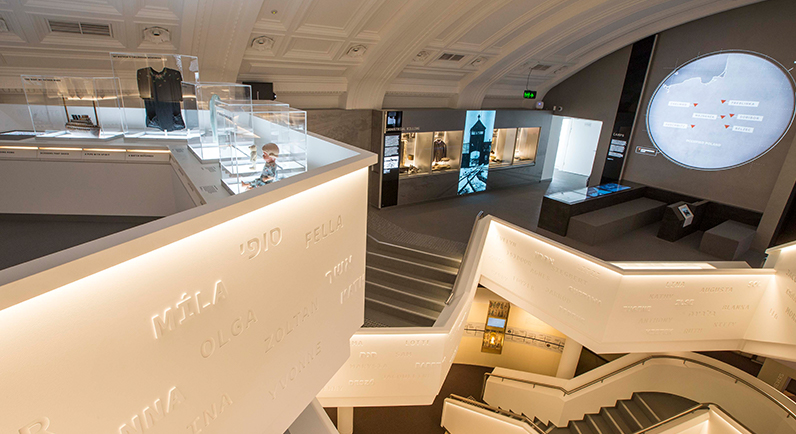The Sydney Jewish Museum is not just a museum; it is also a memorial, a place of remembrance, a figurative gravesite for a multitude without one.
This sentiment was presented to our class on our visit to the Sydney Jewish Museum (SJM) in early September. It has been a sentiment that has stuck with me. The power a place like this can have, the meaning it embodies, the facilitation of significant connection it enables – these ideas have rattled around my brain in the weeks following the visit. An idea like this challenges our understanding of what history means, what it does, what its purpose is to both individual lives as well as the life of society.
The visit to SJM was captivating to me, and immediately drew my attention as an organisation I wanted to approach to undertake this subject’s major project with. Alongside History Beyond the Classroom, I am also taking a subject this semester titled The Holocaust: History and Aftermath. The obvious link of subject matter seemed like a perfect opportunity to focus my semester’s study on this specific area. While being a History major in my degree, I also have a second major in Biblical Studies and Classical Hebrew, a part of the Hebrew, Biblical and Jewish Studies Department at the University. As such, this also felt like a perfect opportunity to link my broader subject areas together. In many ways, noticing these connections across the semester and my degree to SJM feels very poignant as a part of the concluding semester of my degree.

My first session volunteering with the museum occurred this past Friday. I had various opportunities to meet with several members of staff who were exceptionally warm and welcoming. I then received a brief orientation to the museum, particularly focusing on the curatorial department, from the museum’s head curator Roslyn. My project began with a day spent scanning the pages of an old scrapbook, an item donated to the museum in 2010. Contained within the scrapbook was a collection of newspaper clippings from 1960-1961. The story goes that this scrapbook was put together by the mother of the writer of these articles. Working my way through the scrapbook, I tried to conjure up a picture of the circumstances that lay behind its creation. A loving mother, immensely proud of her son who is off reporting as a correspondent in New York, or deployed to various other places over the globe including Jerusalem and Havana depending on current events. Each week, possibly eagerly awaiting a new edition of the paper to scan through for any reports written by her son, she would cut out any that were there in order to memorialise them within the scrapbook.
What struck me is the many ways this item has potential to hold significance. The stories that are told not just in the reports throughout the scrapbook, but also in its creation. The personal, familial significance behind its creation. For SJM, a section of reports covering the trial of Adolf Eichmann are their primary section of interest in the object. The remainder of my time volunteering with SJM will primarily focus on reading, analysing and reporting on the Eichmann related material in the book. What they offer the museum, how the reporter approaches reporting it, what he has to say about it will all be part of my analysis. For the museum, my work will hopefully help further colour in the broader narrative of justice, and the theme of upholding human rights through the prosecution of a major architect of the Holocaust. Through this, my hope is that this work might help SJM (even if only in a small way) to continue to be more than just a collection of objects, but that it might contribute to their goal for the Museum to be a place ‘where history has a voice,’ as their tagline states. That the museum may continue to be a monument to hope. That for those who enter the museum, that it may be a place that ultimately encourages and facilitates deep reflection on the past and the present, and the upholding and advocating of human rights today.
